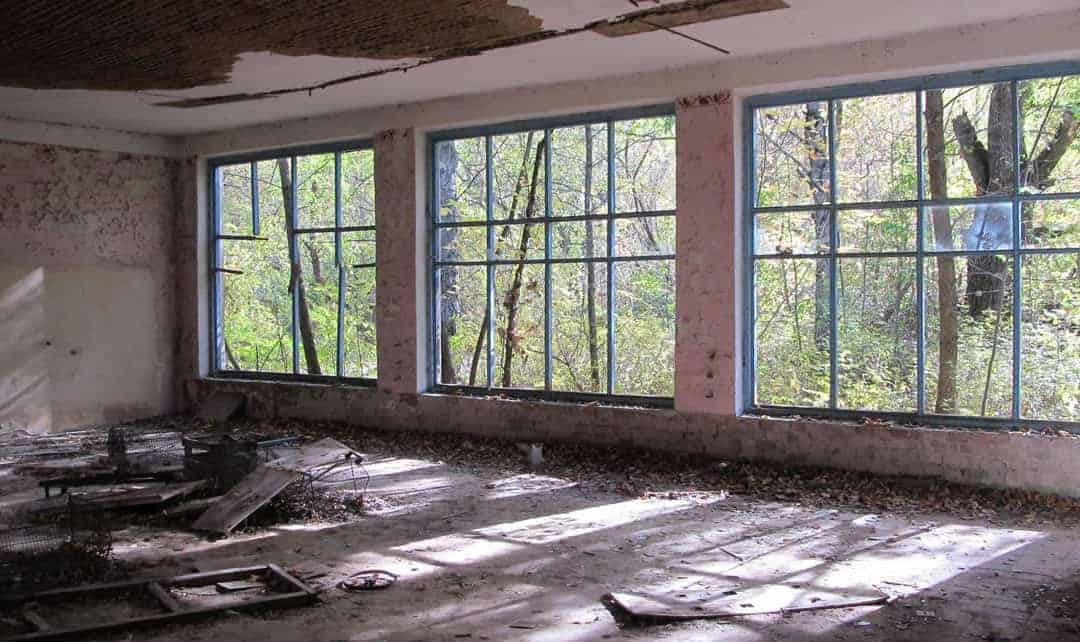When one of the reactors of the Chornobyl nuclear power plant near Pripyat, Ukraine exploded on April 26, 1986, residents of surrounding communities were told they would have to leave their homes for three days.
Most of them never went back. The area surrounding what turned out to be the world’s worst nuclear power plant accident became highly contaminated and it wasn’t safe to return.
Three decades later, people now regularly enter the site of the disaster zone. These aren’t the former homeowners, but tourists. According to Chornobyl Tour, one of several companies operating tours to the area, visitor numbers have been increasing every year, beginning with a few hundred in 2007, to more than 50,000 visitors in 2017, the last year for which figures are available. With the new miniseries Chernobyl (Russian spelling) that began airing this year on Crave/HBO, those numbers are expected to increase even further.
Is it safe? That’s the first question many people ask when pondering a trip to the area. Guides allay your fears by explaining that we are exposed to more radiation on a one-hour airplane flight or by having a chest x-ray than by visiting Chornobyl for the day. That doesn’t mean you shouldn’t take precautions though.
“The most dangerous part of Chornobyl now is the soil,” says guide Helen Lupekha, who cautions us against sitting on any surfaces or putting any of our belongings – such as bags, cameras, tripods or water bottles – on the ground.
On the bus we are given a map showing some of the places covered on the tour, including:
- radar duga – a massive Soviet over-the-horizon radar system, part of a missile defense early-warning network that never really worked
- a public monument, metres away from Reactor Number 4, which was recently entombed in a new steel and concrete sarcophagus
- the abandoned town of Pripyat and the remains of a residential apartment block, grocery store, hotel, indoor public pool and amusement park
Our first stop is in the small village of Zalissya. I am curious to see where people once lived and what has become of their homes. In all, 96 settlements in Ukraine (and dozens more in neighbouring Belarus) were abandoned. Zalissya, located just south of the Chornobyl Nuclear Power Plant and within the 30-km exclusion zone, was one of them.
As we walk on the dirt path through the village, I’m surprised by the presence of so many trees and tall grasses growing here. “People expect to see a burnt and devastated area and apocalyptic site, but it’s not like that,” says Lupekha. “It’s a large area and about 95 per cent looks like a forest. Everything is overgrown and since 2016, Chornobyl is a nature reserve. Nature is thriving in Chornobyl. We have a lot of wild animals, the most diverse and rare species in Ukraine. Nature is recovering quickly.”
About 3,000 people, many of them farmers, once lived here. “They lived very simply, traditionally. No one was complaining about the way of living,” says Lupekha, adding that the area was heavily forested and largely isolated from the rest of the country, in part because it lacked any major roads.
Through the tree branches, a few abandoned homes come into view. They are mostly detached single-storey dwellings, several metres apart. Decades of accumulated grime are evident. In some cases, windows are broken or roofs have caved in from years of neglect.
Though the guides don’t allow you to enter the homes for safety reasons (many are missing floorboards so it would be easy to slip and fall), you can often see a lot through the windows and doors.
We glimpse walls with peeling paint, overturned furniture, the odd item of clothing and a doll missing its dress. A lone black shoe that would have belonged to a man sits on a windowsill. Newspapers yellowed with age are left on a table.
“This is all authentic. It was left by people 32 years ago because when the evacuation started, people were told it will only last for three days, and they trusted the Soviet government and left all their belongings behind,” says Lupekha.
“But people were not allowed back after the evacuation because levels of radiation were thousands of times higher than normal, so of course it was not safe.”
If everyone left all their belongings behind, why, I wondered, were the rooms in many homes mostly empty of furniture and personal effects? Lupekha says there are two reasons. First, a few weeks after the accident and evacuation, workers were sent in to wash everything. “All sorts of furniture was simply thrown through windows, then put on a truck and delivered to special nuclear graveyards to be buried as nuclear waste,” she says while standing in front of a home with two large picture windows that are shattered and broken.
The other reason, which is more frightening, is that many belongings were stolen. “By the 1990s the Soviet Union had collapsed and people lost all their money and savings and were quite desperate. It was difficult to earn any money,” says Lupekha. “And this was an attractive place for squatters that didn’t care about contamination.
“So, for brave Russian people, the idea was to come here to steal all these items, because everything was left. So, they come here, grabbed some furniture or metal to recycle. You load it on trucks, bribe local police officers who pretend they can’t see all the metal from Chornobyl and they take all the belongings out on the roadside and sell it for a much lower price.”
Unsuspecting passersby, she says, would see items they needed at a cheap price and snap it up. And that’s how some new houses in other parts of Ukraine ended up being built with contaminated bricks from Chornobyl.
“So, we still don’t really know how many items are in use from Chornobyl. Unless you check using a Geiger counter, you wouldn’t know about it.” The guide then relays a story of a friend of a friend who worked in Chornobyl and decided to use a Geiger counter in his apartment in Kyiv.
“The levels were all fine until he got to his bedroom and held the meter above a thick carpet, and in a few moments it started to shout and beep and showed a reading 20 times above the safe level. He was concerned and asked his mother, ‘why do we have four micro zeros over the carpet in the bedroom,’ and she said very casually, ‘oh that’s your father, he brought something from Chornobyl a few years ago.’”
It’s believed about 900,000 people came to clean up the area in the years after the nuclear accident. “When I started to work here and talk to people about it, it seems like every second person went to Chornobyl to do something – as a driver to help people, to work at hospitals, to clean up and so on,” says Lupekha.
“In Ukraine, it’s quite normal to have some stuff, like a TV, or radio or tape recorder from Chornobyl, absolutely normal. That’s the most horrifying fact…right now people don’t know anything. It’s something you don’t speak about in Ukraine. It’s like a taboo. You have something? Oh, that’s fine. It’s frustrating we don’t have many people from Ukraine (visiting) Chornobyl. They’re scared and don’t want to learn anything more about this area. That’s the sad fact for me,” says Lupekha.
Diane Slawych is a contributing writer for REM.
















